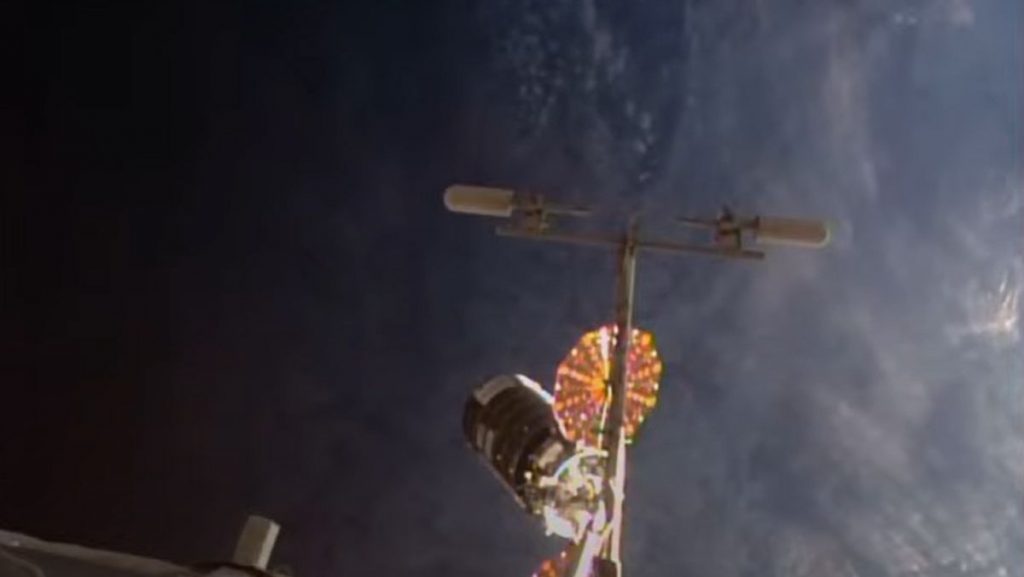A private cargo spacecraft cast off from the International Space Station (ISS) early Tuesday (June 28) on a course toward oblivion as it wraps up its months-long mission to the outpost.
Built by Northrop Grumman, the robotic Cygnus freighter was released by the station’s robotic arm at 7:05 a.m. EDT (1105) Tuesday morning. The departure occurred an hour later than planned to avoid potential encounters with space debris and allow for better communications with the spacecraft’s Northrop Grumman handlers, NASA officials said.
The Cygnus — named S.S. Piers Sellers after the late NASA astronaut and climate scientist — arrived at the International Space Station (ISS) on Feb. 21 with more than 8,300 pounds (3,760 kilograms) of scientific experiments and other supplies.
“We just want to take a second to say congratulations to the entire Northrop Grumman and NASA team on an outstanding NG-17 mission,” NASA astronaut Jessica Watkins radioed to Mission Control after Cygnus’ departure.
“In addition to the literal tons of supplies science and hardware it delivered to the ISS, the NG-17 Cygnus S.S. Piers Sellers successfully completed a reboost of the ISS, bringing a new and important capability to the space station that Sellers helped build,” Watkins added.
S.S. Piers Sellers is leaving on a high note. Just a few days before its planned departure, the freighter fired its main engine on June 25 to boost the altitude of the ISS. The maneuver was a milestone moment, showing that Cygnus craft can handle ISS reboosts, which had to date been handled by robotic Russian Progress spacecraft.
“This reboost of the ISS using Cygnus adds a critical capability to help maintain and support the space station,” Steve Krein, vice president, civil and commercial space, tactical space systems at Northrop Grumman, said in a statement (opens in new tab). “It also demonstrates the enormous capability Cygnus offers the ISS and future space exploration efforts.”
Now that the NG-17 Cygnus has left the space station, it will deploy a series of small payloads in orbit before ending its mission, NASA officials said.
S.S. Piers Sellers will fire up its engine again on Wednesday (June 29) in a deorbit burn, which will set it on course for a destructive reentry into Earth’s atmosphere. (Unlike SpaceX’s Dragon cargo capsule, which is reusable, the Cygnus and Progress spacecraft burn up when their missions are complete.)
S.S. Piers Sellers was the 17th Cygnus to fly to the space station. The spacecraft’s departure occurred shortly after another spaceflight event — the launch of NASA’s CAPSTONE moon mission, which is scheduled lifted off aboard an Electron rocket on Tuesday at 5:55 a.m. EDT (0955 GMT).
Editor’s note: This story, originally posted on June 27, was updated on June 28 to include details of the NG-17 Cygnus S.S. Piers Sellers cargo ship’s departure from the International Space Station.
Mike Wall is the author of “Out There (opens in new tab)” (Grand Central Publishing, 2018; illustrated by Karl Tate), a book about the search for alien life. Follow him on Twitter @michaeldwall (opens in new tab). Follow us on Twitter @Spacedotcom (opens in new tab) or on Facebook (opens in new tab).

